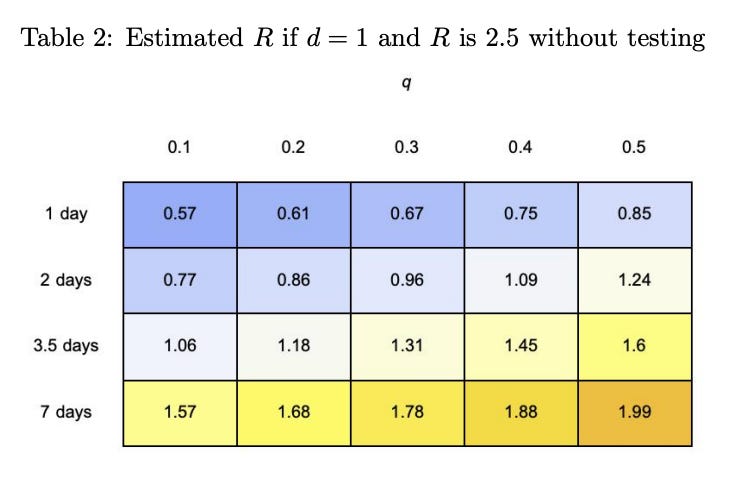Welcome to Plugging the Gap (my email newsletter about Covid-19 and its economics). In case you don’t know me, I’m an economist and professor at the University of Toronto. I have written lots of books including, most recently, on Covid-19. You can follow me on twitter (@joshgans) or subscribe to this email newsletter here.
This newsletter has discussed the benefits of rapid testing quite often. The US government recently agreed to purchase 150 million units of the new Abbott rapid test. But that would only allow you to test half the population once. The benefit of cheap tests is that you can test widely and frequently. The benefit of rapid tests is that you can act on test results and isolate infectious people. That, in turn, limits how long you have to have a testing regime in place.
Today’s post looks at how frequent tests should be. It is based on a new paper by Ted Bergstrom, Carl Bergstrom and Haoran Li. The paper does the maths and calculates the frequency and error rate of testing that you need to get the effective reproduction number (R) below 1. Do that and you are on a path to wiping out the virus. The primary thing that we care about is how much exposure an individual is likely to get based on the frequency of testing and how accurate the tests are. More frequent testing is good as infectious people are isolated quickly. More accurate tests are good because you don’t miss infectious people on one or more rounds of testing allowing them to continue to do harm.
Intuitively, this is easy but it is the magnitudes that matter. And here are the key tables where q is the probability of a false negative. If test results are delayed by one day, you get:

If the test results are immediate, you get:

What this says is that if you have a false negative rate of 30 percent, you will have to test every two days if there is a one day lag in reporting and likely every 3-4 days if you have immediate results. It turns out that the error rate does not matter as much if you are testing frequently. In other words, you don’t need great tests if you can test people two or three times a week.
I actually think that things might be better than this. The assumed baseline R is 2.5. However, with people being cautious at the moment, R is closer to 1. Thanks to this neat calculator, you can work out what might happen. In this case, with an R = 1.2 and a 30% error rate, you can get the effective R below 1 with a testing frequency of 10 days. In other words, it is not crazy to think about testing every week. On that basis, though, you can also pretty much wipe this whole thing out if you tested every two days for a couple of weeks.
The bottom line is that rapid and cheap tests are good. A big push on suppression using those as the main tool is even better. Put simply, every month we go on without doing this is a month of the crisis we don’t need to be having.

